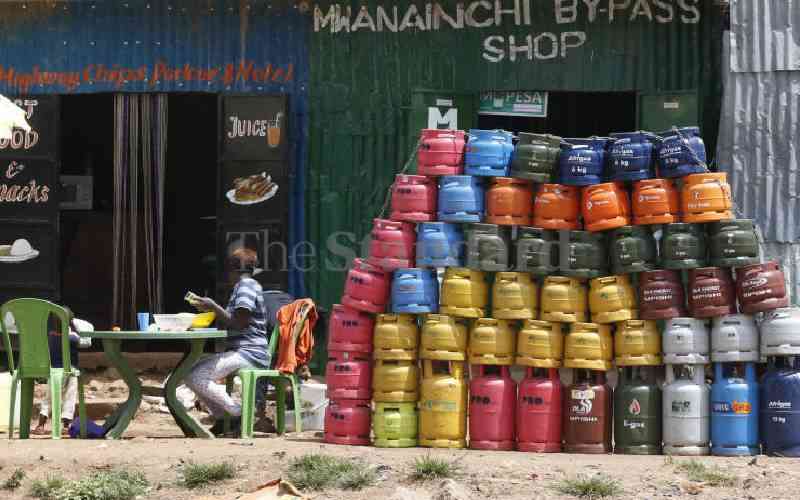A cursory glance at any supermarket in Kenya reveals a cornucopia of goods adorning the shelves. Eggs and fruit juices from South Africa jostle for space with oranges from Israel.
Malaysian electronics compete with those from China. Household furniture and apparel for all ages and genders bear labels proudly proclaiming, “Made in Turkey.” It would seem all nationalities are represented under one roof. All, save for Kenya itself!
Manufacturing it seems, has precluded Kenya from this “country roll of honour.” That the president has made it one of the four pillars on which his legacy will be hinged is a step in the right direction.
It is, therefore, important to understand it and to examine some hinderances to this vital process.
Every developing nation aspires to be fully industrialised. A favourable balance of trade provides an inchoate definition of such a status.
Simply put, a favourable balance of trade is when a country’s exports of goods and services are greater than its imports.
Thus, the level of manufacturing of a country becomes the quintessential expression of its status as fully developed or otherwise.
The nations of the West developed their manufacturing practices from cottage industries. These were activities carried out in people’s homes.
With time, there was an incremental evolution from a basic form of manufacturing to industries.
This is perhaps the model we should use to create our own industrial base, from simple to complex. A nation that has mastered rudimentary manufacturing of items like jeans and t-shirts (light industries) would be better placed to scale up in industrialisation.
This is would be in terms of value addition in every area. President Uhuru’s Jamhuri Day speech focused on four subsectors in manufacturing expansion; the blue economy, agro-processing, leather and the textile industries.
Government policies should now reflect an endeavour to reap maximum benefits across the entire value-chain instead of merely exporting raw materials for processing overseas.
The biggest impediment to manufacturing in Kenya is the cost power. Electricity here costs 14 US cents per kilowatt hour. Compared to Ethiopia the regional competitor who charges 3 US cents, Kenya is over four times more expensive.
As exporters to the same markets, like Sudan and Uganda, these power costs make Kenya lose its competitive edge.
Further, it becomes less attractive to Foreign Direct Investment (FDI). FDI is particularly important for manufacturing because of human resource capacity development and technology spill-overs.
Stay informed. Subscribe to our newsletter
Another impediment is the problem of logistics. Kenya’s Standard Gauge Railway (SGR) will eventually cost close to 6 billion.
This includes the interest component of the Chinese loan used to finance it. The line stretches from Mombasa to Naivasha, slightly over 500 kilometres. Tanzania have an electrified SGR that runs for 2700 kilometres.
This originates from Dar to the borders of Rwanda and Burundi with a side-line to Mwanza. This is being financed and built by Turkey at a projected cost of 7 billion shillings.
For an extra billion, the Tanzanians have a lot more rail. Obviously, part of the cost of a product is residual in its conveyance to the market. A product manufactured in Tanzania even at the same cost as Kenya would be cheaper to transport to Rwanda and Burundi.
Non-tariff barriers are also impediments to manufacturing. Previously, inefficiencies in Kenya’s transport system ensured that goods imported through Mombasa to Nairobi incurred high carriage costs.
These made them expensive to the extent that local manufacturers stood a chance at being competitive. Kenya now has a good road network and SGR to boot. Goods can get to Nairobi within a day and at a fraction of the previous cost. This is to the disadvantage of some manufacturers.
There are challenges that must be resolved for manufacturing to become a reality. The first of these is how to ensure that jobs are provided for Kenya’s youthful population. Currently, the youth make up 90 per cent of the population. Less than 10 per cent of those eligible
for jobs are in formal employment. These egregious statistics are the reason why many 30-year-olds, having attained the highest levels of education, are engaged in “hustling” for a living. Coherent and sustainable policies must be instituted to redress this.
Second, corruption is the elephant in the room. Where the corruption quotient is low, economies such as those of Rwanda and Ethiopia have thrived.
An investigation as to why Ethiopia has lower power costs than Kenya would reveal sheer artifice on the part of those who sell expensive diesel-generated electricity. And it has cost Kenya greatly.
Ten years ago, Kenya’s GDP was 50 per cent greater than Ethiopia’s. Today, Ethiopia has surpassed Kenya as the biggest economy in the Eastern Africa region, this without heavy external borrowing.
Finally, Kenya must avoid falling prey to the “One Belt One Road” initiative. This is a one-way road policy for the proliferation of Chinese goods. Already, SGR is helping bring in Tilapia fish from China, far cheaper than the day’s catch from Kisumu.
Kenya must ensure that the containers that make the reverse journey back to Mombasa do not do so empty.
Mr Khafafa is Vice Chairman, Kenya-Turkey Business Council.
 The Standard Group Plc is a
multi-media organization with investments in media platforms spanning newspaper
print operations, television, radio broadcasting, digital and online services. The
Standard Group is recognized as a leading multi-media house in Kenya with a key
influence in matters of national and international interest.
The Standard Group Plc is a
multi-media organization with investments in media platforms spanning newspaper
print operations, television, radio broadcasting, digital and online services. The
Standard Group is recognized as a leading multi-media house in Kenya with a key
influence in matters of national and international interest.
 The Standard Group Plc is a
multi-media organization with investments in media platforms spanning newspaper
print operations, television, radio broadcasting, digital and online services. The
Standard Group is recognized as a leading multi-media house in Kenya with a key
influence in matters of national and international interest.
The Standard Group Plc is a
multi-media organization with investments in media platforms spanning newspaper
print operations, television, radio broadcasting, digital and online services. The
Standard Group is recognized as a leading multi-media house in Kenya with a key
influence in matters of national and international interest.









